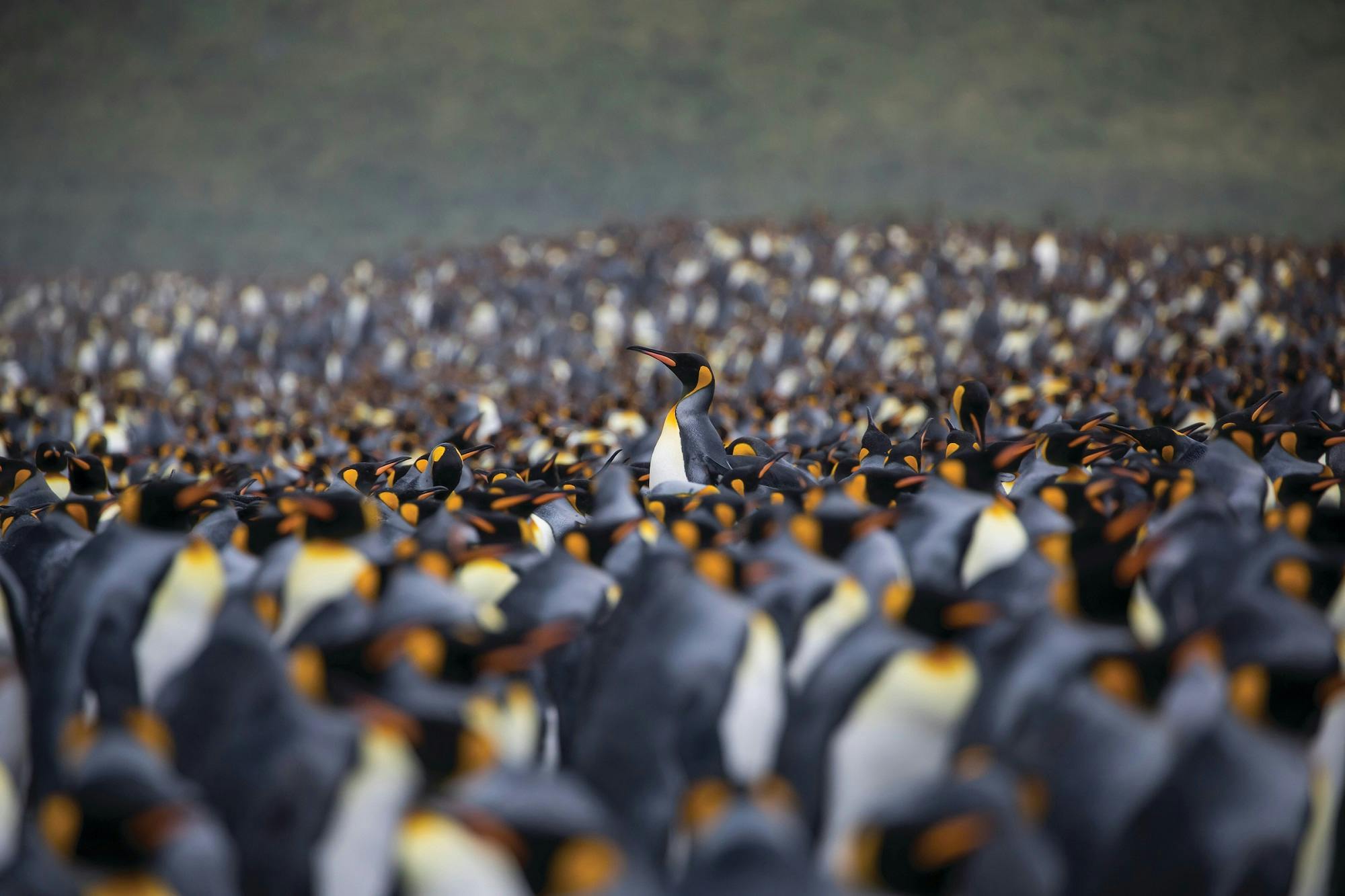The King Penguin of South Georgia: All You Need to Know
They live like kings because they are kings — King penguins, that is. Outweighed and outranked by the Emperor penguin, the King penguin far outnumbers the Emperor, which numbers about 600,000. Kings have more than a million breeding pairs, and some researchers suggest the real number may be triple that. They live on Arctic and sub-Arctic islands. Let’s take a look at this bird that doesn’t fly but does swim, hunt and dive.
South Georgia’s noisy, shuffling penguin community comprises four species, including the world’s largest population of Macaroni penguins, as well as Gentoo and Chinstrap penguins, but it is the island’s King penguins that waddle away with much of the spotlight.
“King penguins are inquisitive and will often approach [a human visitor], especially if the visitor is quiet and moves slowly,” says Luke Kenny, a marine biologist and one of Silversea’s most experienced Expedition Team members, who regularly accompanies guests to South Georgia and the Antarctic region.

Kenny’s first trip to South Georgia, aboard a fisheries patrol vessel, was more than a decade ago. Today, he guides Silversea’s guests who board Zodiacs and go ashore, ensuring they know the International Association of Antarctica Tour Operators regulations (IAATO), which are designed to protect the wildlife and the environment.
These regulations ensure that the island’s penguins are not disturbed. While on South Georgia cruises, guests must remain at least 5 meters (more than 16 feet) away from the animals. “Standing still and letting them come to you, or letting them pass by as they go about their own business, is the best experience,” Kenny says. “If the weather gods are smiling, we can see big colonies—thousands of King penguins.”
South Georgia is one of the best places to see King Penguins and the species is particularly easy to identify (see above). “They are beautiful animals, very striking and, well, regal,” Kenny says.
Ahead of each landing, he prepares guests for what they’re likely to experience: “The noise generated by so many trumpeting birds and whistling chicks is remarkable, and the smell of soup-like pools of guano is one that you won’t quickly forget.” But nothing can detract from the fact that South Georgia is a pristine wonderland and a place few humans get to visit.
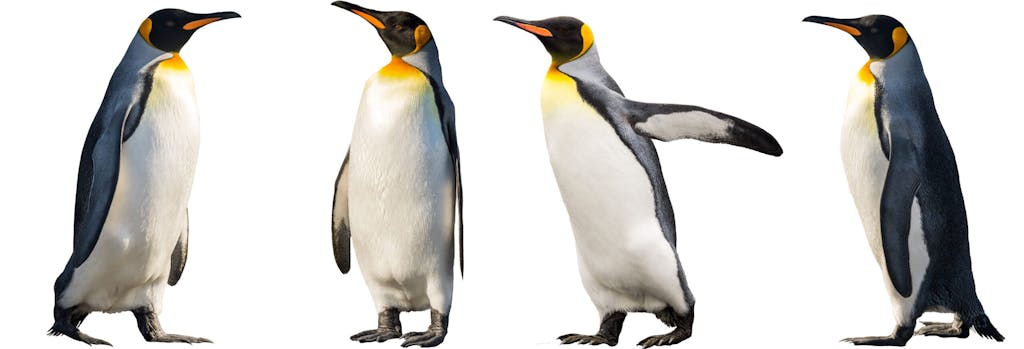
Seabirds herald that the island Is near
“Various signs will bring South Georgia into view long before your arrival,” says Jamie Watts, a lecturer and guide who specializes in the Antarctic region and has been visiting the island since 2003. “An almost incredible coincidence of oceanography and biology brings together a massive number of seabirds for dozens of miles in all directions.
“You have hundreds of tiny blue-gray Antarctic Prions [birds] whizzing over the water, and Wandering Albatrosses riding the airwaves around the ship, like giant gliders.”
Fur seals also porpoise around the ship, and travelers often spot orcas and other whales. And then high, jagged mountain peaks appear on the horizon — nearly 3,000 meters, or almost 10,000 feet, straight up out of the sea. “It’s utterly beautiful, and even after spending a total of nearly 1,000 days on and around the island, I still get butterflies when we approach,” Watts says.
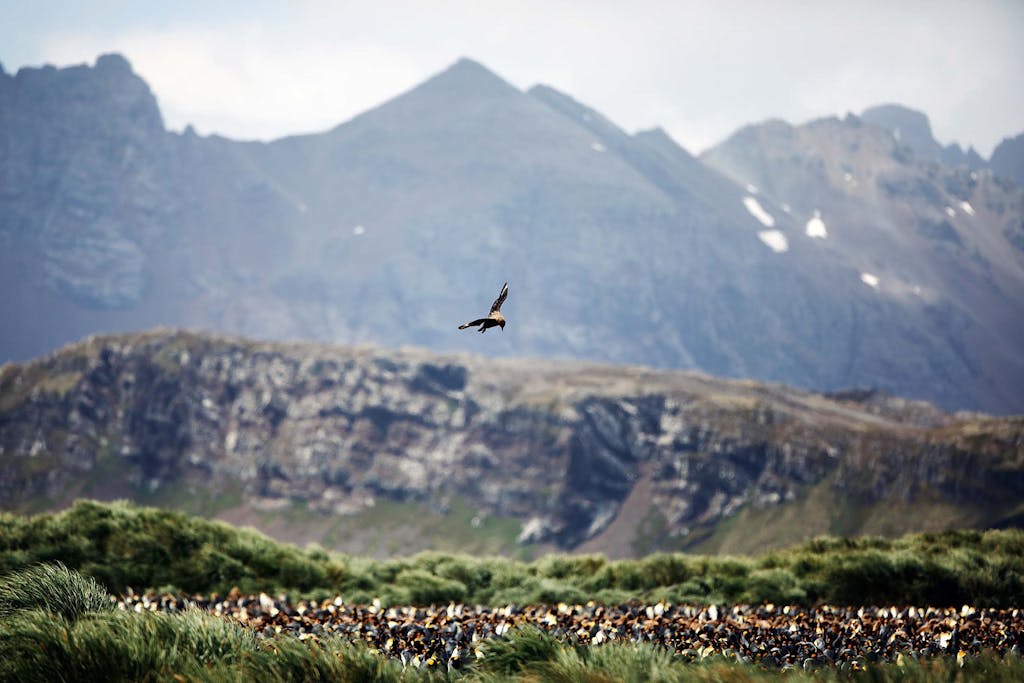
Wonders abound in the Antarctic zone
Watts is enchanted by the charcoal-black mountains of South Georgia, rising above vivid ice-blue waters inside what’s known as the Antarctic convergence in the South Atlantic Ocean. The island, a British territory, lies 700 nautical miles (1,300 kilometers) north of the Antarctic Circle. There’s no airstrip, so travelers can reach it only by sea. That means only a select few smaller ships can approach closely enough to dispatch Zodiacs to visit the most remarkable places, treading lightly as they go.
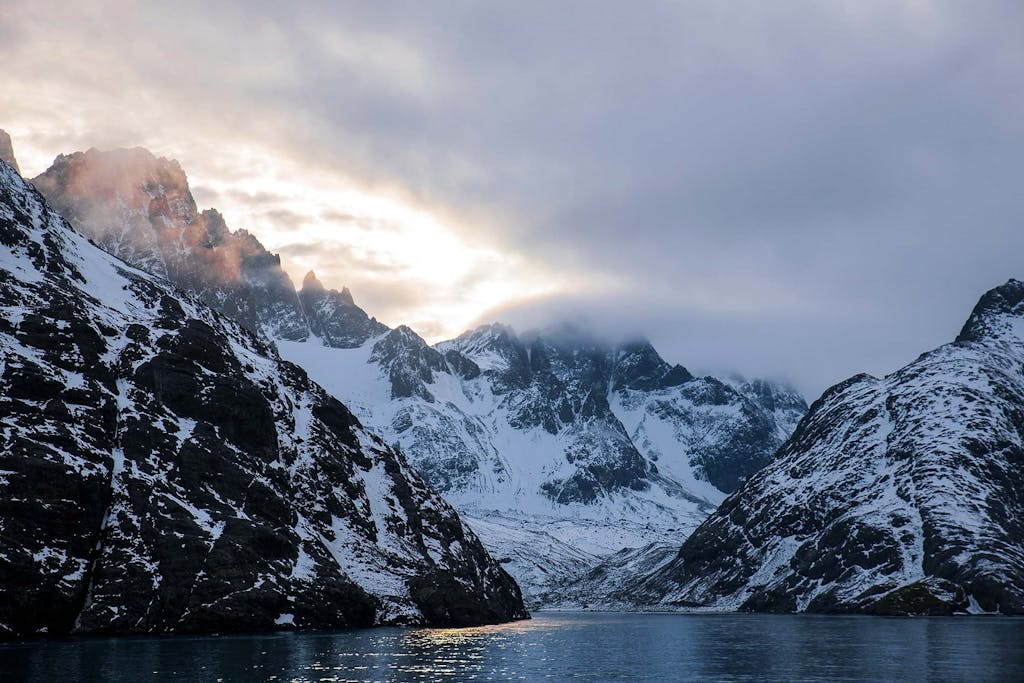
“On a small expedition ship, you usually get more time ashore and in less crowded circumstances,” Kenny says. “Zodiacs are necessary to explore deeper and to get ashore in the various bays and fjords around the island.
“There are regulations concerning how many people can be ashore at one time. Ships larger than 500 passengers can only land at Grytviken, which doesn’t give you anywhere near the full South Georgia experience in terms of wildlife.
“What makes South Georgia so special isn’t just one thing; it’s all the parts that make the whole.”
Grytviken, one of South Georgia island’s former whaling stations, is well worth visiting for its rich history. Its well-preserved Norwegian Lutheran church sand its impressive Gothic revival spire stand above the rusted ruins of the whaling operations. Norwegian whalers built the structure in 1913 during the industry’s heyday. Today, it’s fittingly known as the Whalers Church. It’s possible to get married there, as some guests have done.
Read more about visiting Antarctica.
Lessons in conservation
Today, the Antarctic region is home to numerous scientific bases, including South Georgia’s King Edward Point Research Station, part of the British Antarctic Survey. Still, Kenny does not shy away from discussing the region’s dark past: populations of wildlife were decimated for commercial reasons. “This ecosystem has rebounded from the devastating effects that mankind wrought on it,” he says.
An international convention under the Antarctic Treaty System came into force in 1982. The Commission for the Conservation of Antarctic Marine Living Resources (CCAMLR) works to conserve marine life and support scientific studies that ensure fishing in the region is sustainable.
Today, the impacts of climate change are already apparent in the region. Climate change is causing the Antarctic Polar Front (APF) to recede. The APF is a prime source of fish and squid for the King Penguins of South Georgia. It is moving pole-wards, out of the 435-mile (700 kilometer) hunting limit of some King penguin populations. Scientific modeling published in the journal Nature Climate Change in 2018 predicted that some populations of King penguins will either have to move further south or island-hop in search of food. They may even increase their numbers on South Georgia.
Many guests who embark on Silversea’s expeditions to the Antarctic are already environmentally conscious. But others also report a changed perspective thanks to the wonders they witness in and around South Georgia, heightening their sense of urgency to protect our planet.
These colonies of penguins, as well as the spectacular frozen landscape and wild oceans, attract travelers from around the world and leave South Georgia with an enriched appreciation for the natural beauty of our planet and all that inhabits it.
General features of the King penguin
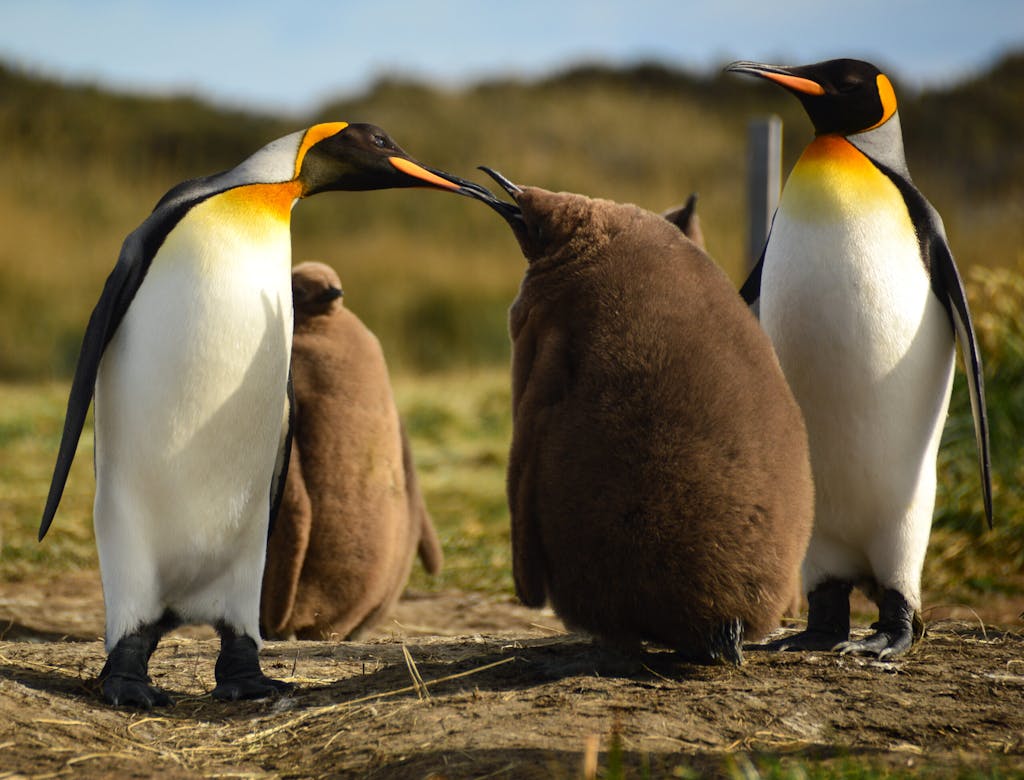
King penguins are a study in black and white and yellow. The back is black, the front is white. It has patches of yellow on its ear and just below its throat, not unlike a cravat. It tops out at an inch over 3 feet and generally doesn’t weigh more than 37 pounds. Their babies are dowdy brown from birth, but molt around their first birthday. King penguins also have unusual pupils: In light, their pupils become a tiny square. In light, the pupil becomes big and round.
How fast can King penguins move?
The fastest King penguins move about 2 mph. They use their flippers for propulsion, and they can swim up to 10 mph. Instead of flying, they rely on their ability to dive into the water from great heights for takeoff.
How do King penguins hunt?
The King penguin hunts for fish using its beak, which has two sharp hooks at the end. When hunting, the penguins stand up on land and dive into the water, where they use their flippers to catch fish. They then bring them back to shore and eat them.
Are King Penguins Social?
The fastest King penguins move about 2 mph. They use their flippers for propulsion, and they can swim up to 10 mph. Instead of flying, they rely on their ability to dive into the water from great heights for takeoff.
How long do King penguins live?
Kings live about 26 years in the wild and as much as 40 years in captivity.
Do King penguins have any natural predators?
The main predator are the ferocious leopard seal and orcas, or killer whales. The King is slightly protected from the former because the leopard seal generally lives some distance from the King penguin colonies.
What are five interesting facts about King penguins?
Kings live in colonies of up to 10,000.
They are pescatarians (fish eaters) and also eat krill, which isn’t microscopic, as many people think. Krill can be 2 inches or slightly more but weigh only 3/10ths of an ounce.
Kings divide their time equally between land and sea.
Kings are monogamous during the mating season and about a third of the time, return to the previous mate the next breeding season.
When a male King wants to attract the attention of a female, he tries to make himself look bigger by stretching and preening.
Learn how to recognize the South Georgia pipit.
